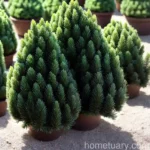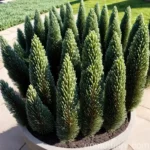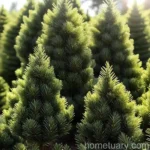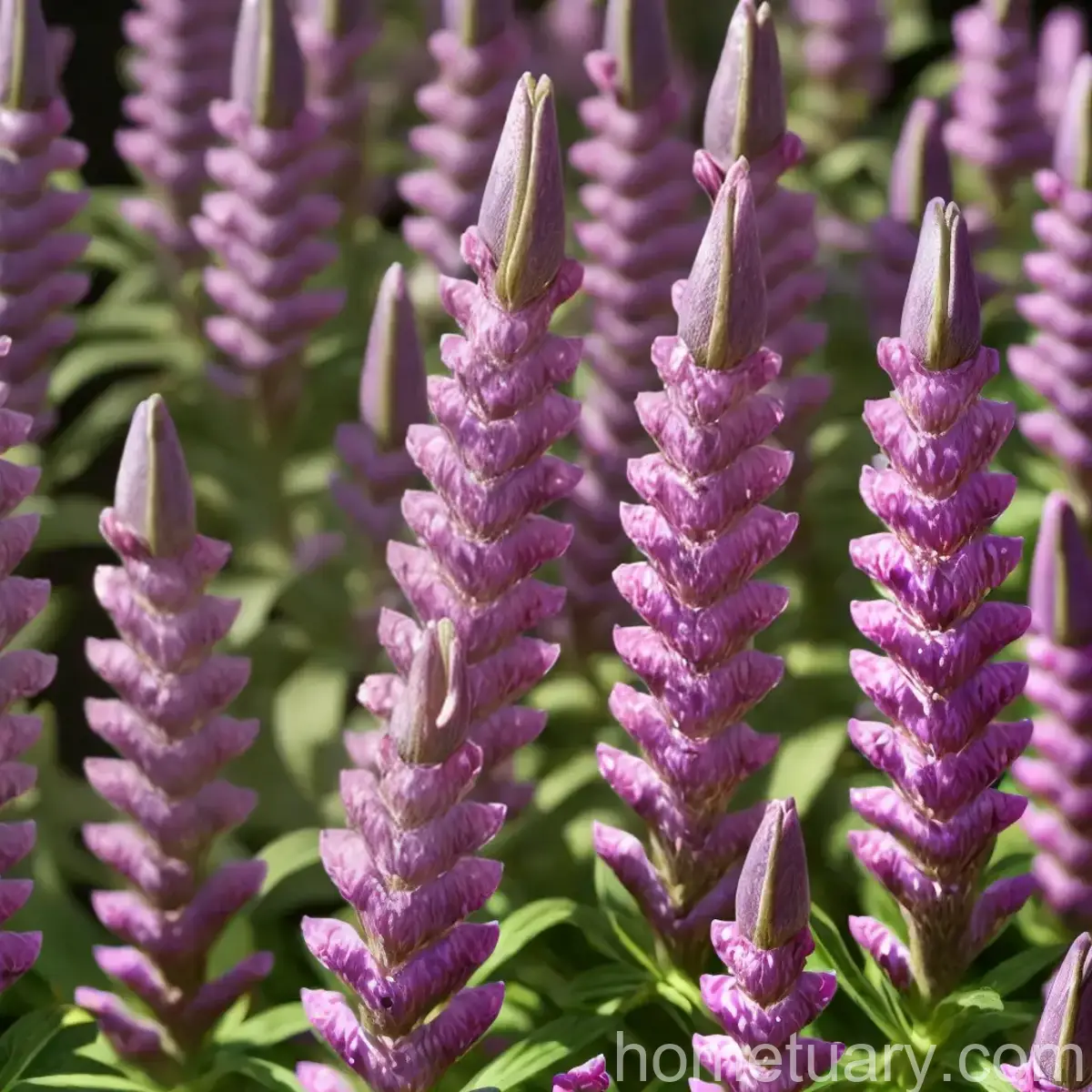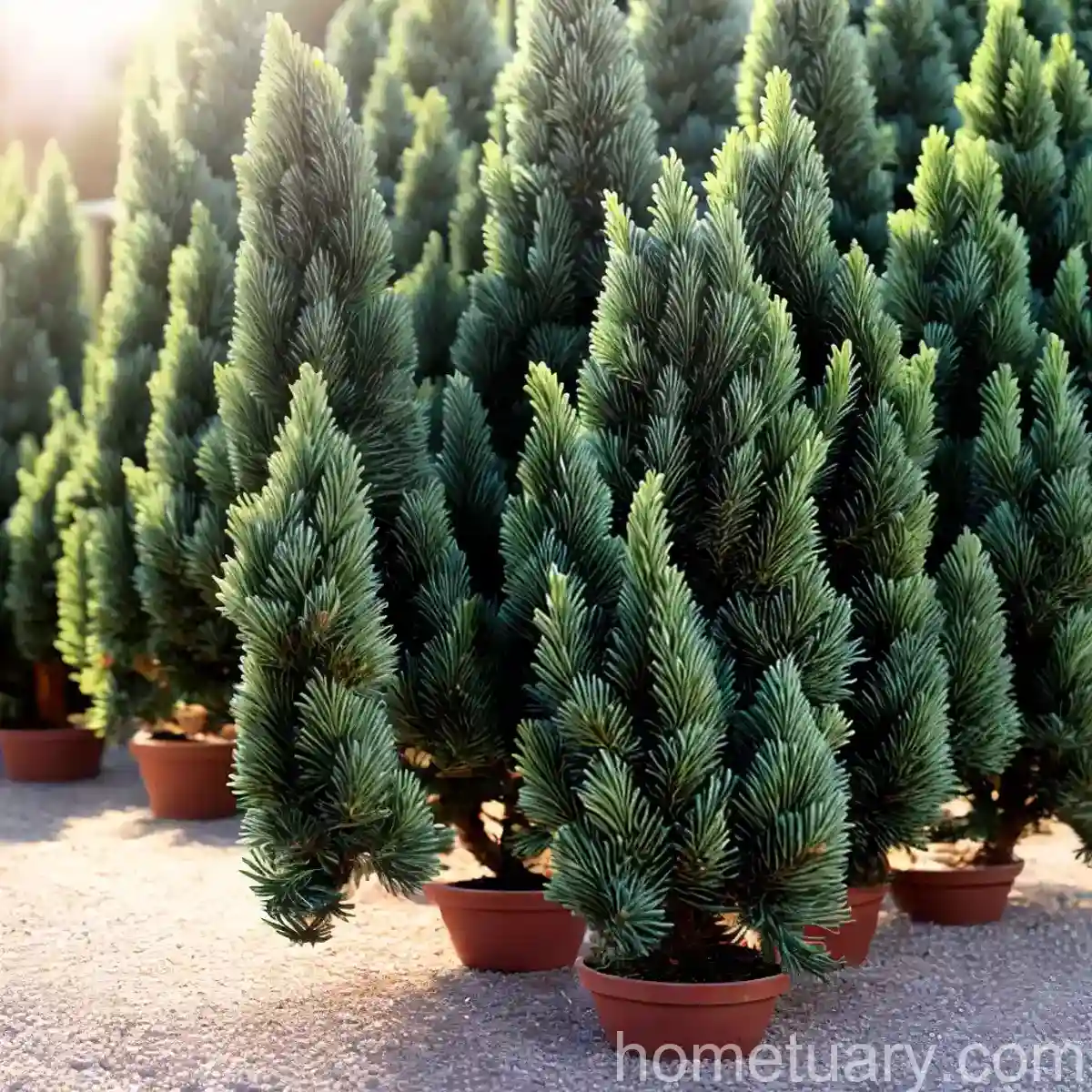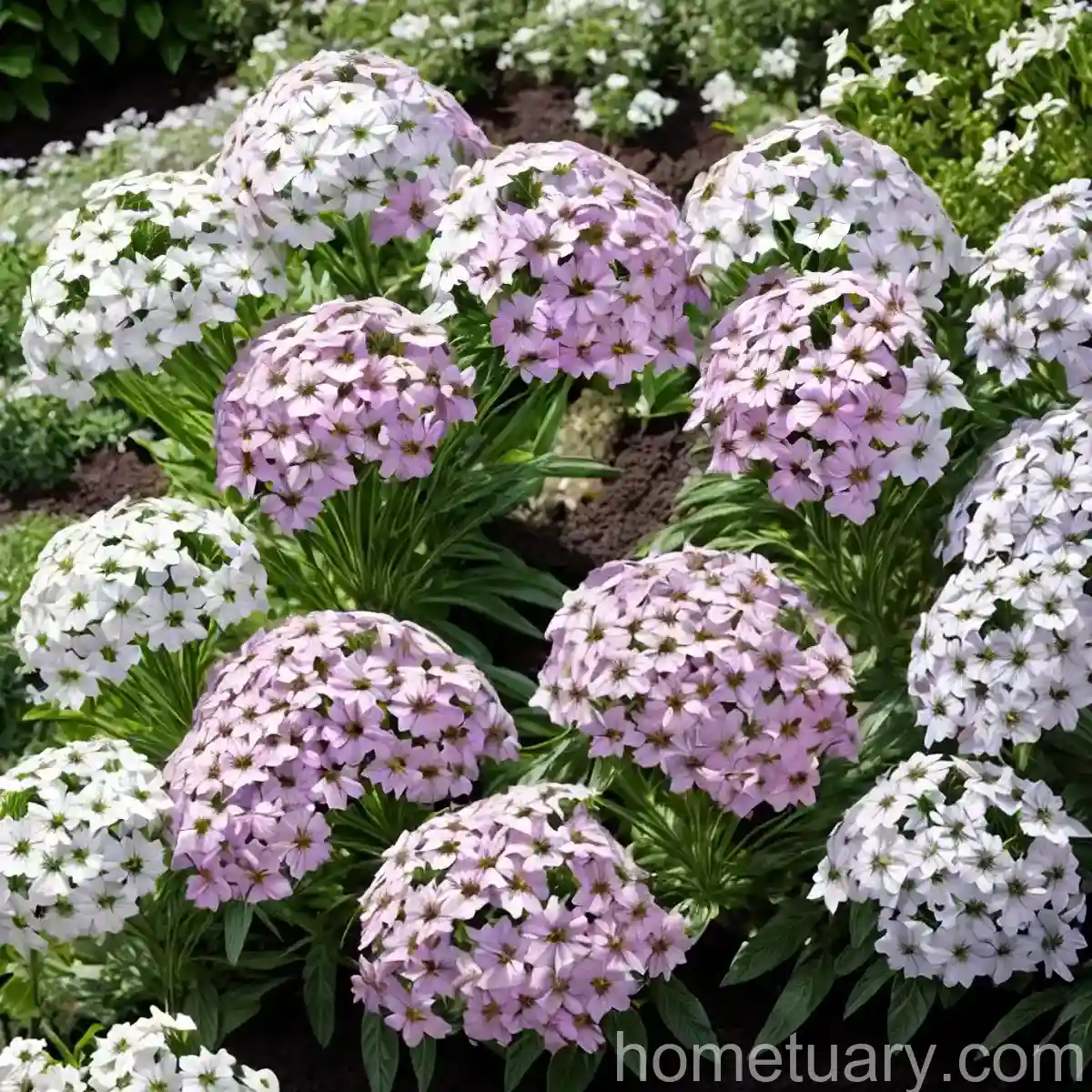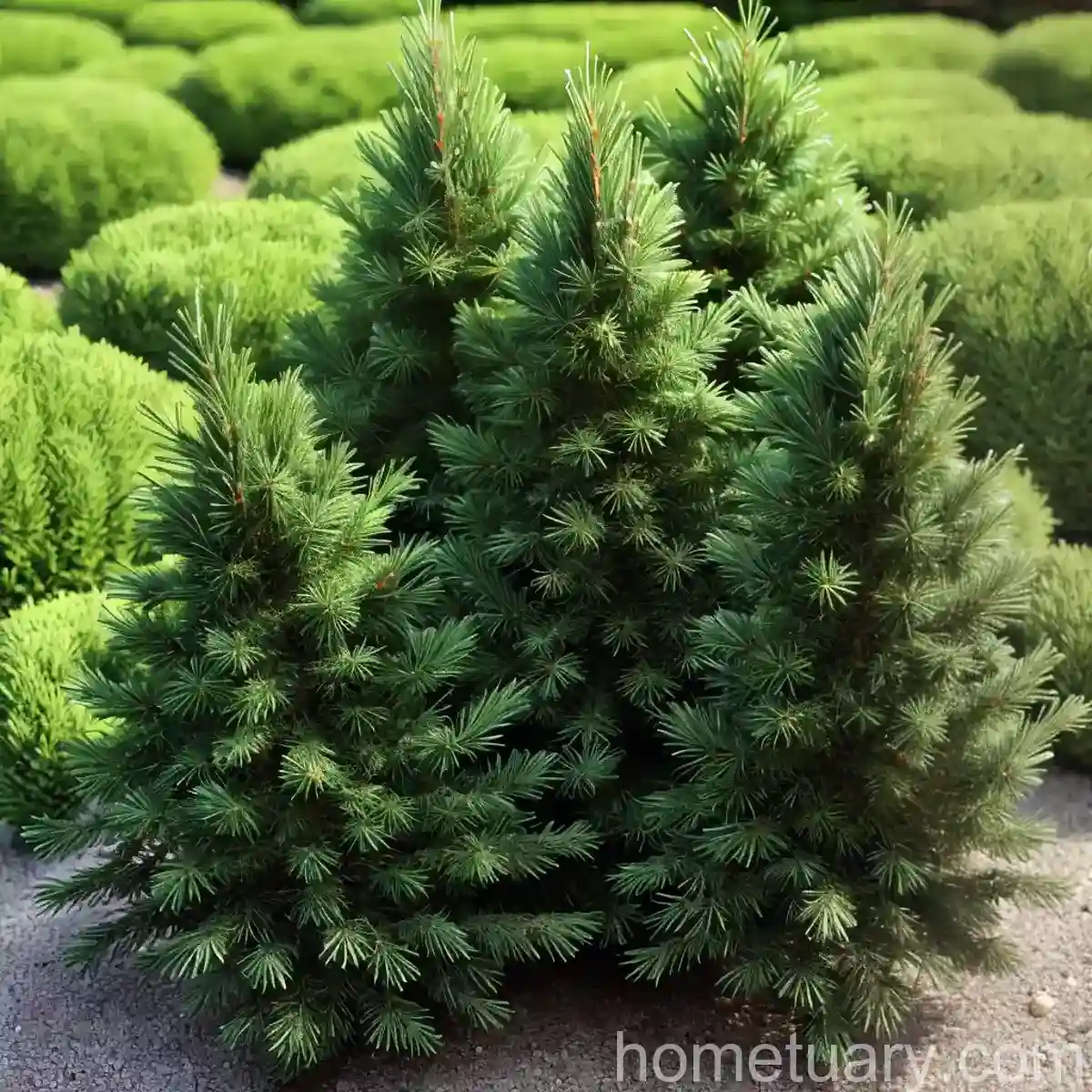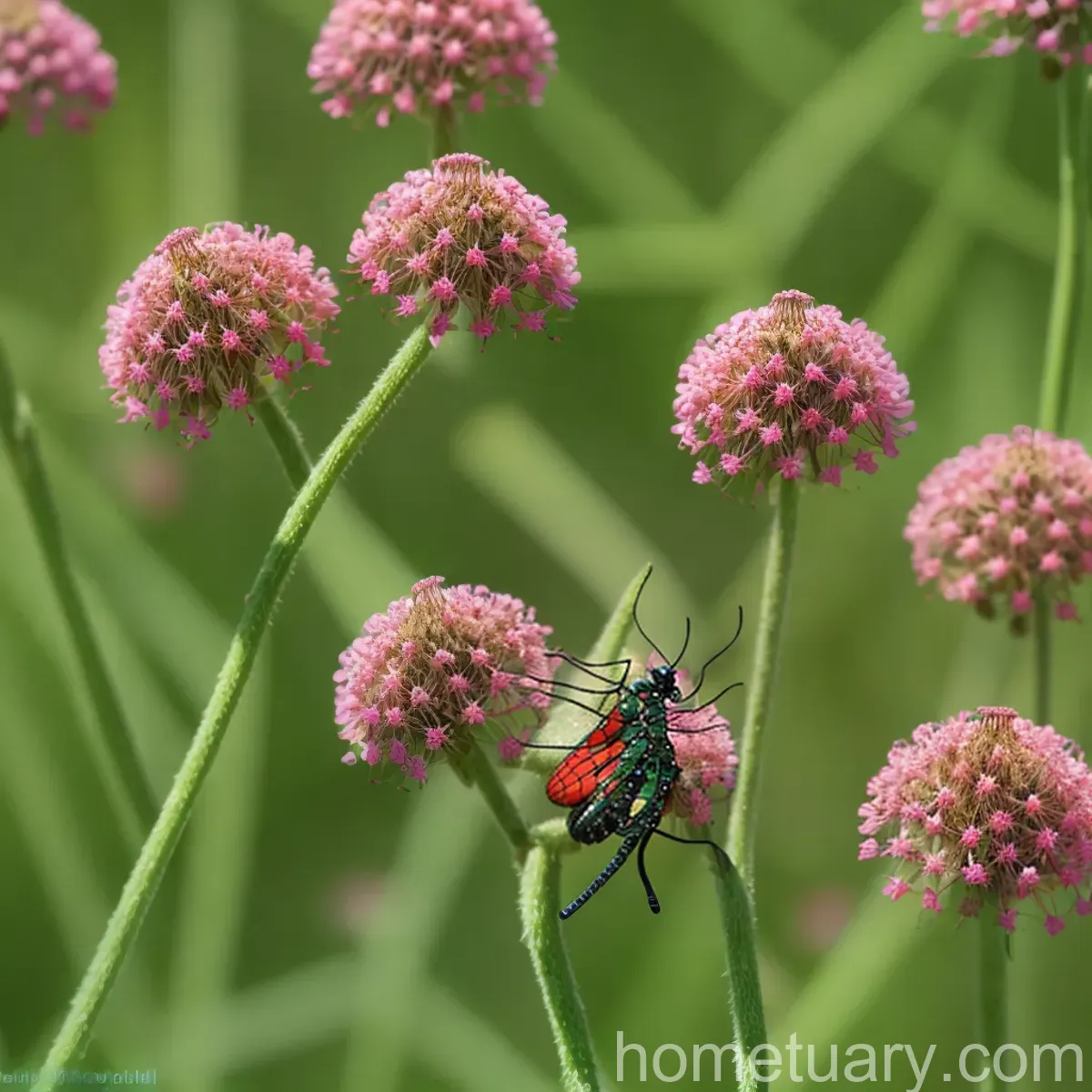The Splendor of Colorado Spruce (Picea pungens ‘Hoopsii’)
As a plant scientist, I have long been captivated by the extraordinary diversity and beauty of plant life, and one particular species that never fails to capture my attention is the Colorado spruce, scientifically known as Picea pungens ‘Hoopsii’. This remarkable coniferous tree is renowned for its striking blue foliage, stately form, and adaptability to various growing conditions. In this comprehensive guide, I will delve into the captivating world of the Colorado spruce, exploring its botany, cultivation, uses, and much more. Whether you are an avid gardener, horticulture enthusiast, or simply intrigued by the wonders of nature, join me on this fascinating journey through the realm of Picea pungens ‘Hoopsii’.
What is Plant: Colorado Spruce (Picea pungens ‘Hoopsii’)?
Colorado Blue Spruce Facts
The Colorado spruce, also known as Colorado blue spruce, is a species of spruce tree native to the western United States, specifically the Rocky Mountains region. Renowned for its striking blue-silvery foliage and conical form, the Picea pungens ‘Hoopsii’ cultivar is a particularly esteemed variety within the species, prized for its vibrant color and ornamental value.
Picea pungens ‘Hoopsii’ Description
The Picea pungens ‘Hoopsii’ cultivar is characterized by its dense, pyramidal to conical form and remarkable blue needles. The needles are stiff and sharply pointed, ranging from silver-blue to intense blue in color, lending the tree an enchanting and distinguished appearance. This distinctive hue sets ‘Hoopsii’ apart from other Colorado spruce varieties, making it a highly sought-after choice for landscaping and ornamental purposes.
Characteristics of Colorado Spruce
- Foliage: The most striking feature of the Colorado spruce is undoubtedly its foliage. The needles are arranged in a spiral pattern around the branches, creating a dense and luxurious canopy. The blue coloration, particularly pronounced in the ‘Hoopsii’ cultivar, adds an element of elegance and uniqueness to the tree.
- Form: Colorado spruce trees typically exhibit a conical or pyramidal growth habit, with a strong central leader and dense branching. The silhouette of the tree is both graceful and commanding, making it a magnificent presence in any landscape.
- Size: Depending on the specific cultivar and growing conditions, Colorado spruce trees can reach substantial heights, often ranging from 30 to 60 feet in maturity. Additionally, their spread can span 10 to 20 feet, contributing to their substantial and imposing presence in the landscape.
- Bark: The bark of Colorado spruce trees is thin, smooth, and gray-brown in color, with subtle flaking as the tree matures. While not as renowned as the foliage, the bark adds to the overall visual interest of the tree.
Colorado Blue Spruce Varieties
In addition to the ‘Hoopsii’ cultivar, the Colorado blue spruce boasts an array of other captivating and distinctive varieties. From ‘Glauca’ with its powdery blue needles to ‘Thompson’ with its graceful weeping form, there is a Colorado spruce variety to suit a wide range of preferences and landscaping needs.
Key Takeaways – Colorado Spruce (Picea pungens ‘Hoopsii’)
Cultivation
The cultivation of Colorado spruce, particularly the ‘Hoopsii’ cultivar, is an endeavor of great reward and satisfaction. This magnificent tree can thrive in a variety of environments, gracing gardens, parks, and urban landscapes with its beauty and presence. Its versatility and adaptability make it a cherished addition to horticultural endeavors of all scales.
Uses
The uses of Colorado spruce, especially the ‘Hoopsii’ variety, are multifaceted and diverse. From serving as an eye-catching specimen tree or elegant focal point in a landscape to providing windbreaks and privacy screening, the Colorado spruce is renowned for its ornamental, functional, and ecological value.
Colorado Spruce (Picea pungens ‘Hoopsii’) Care Guide
Water
The care and maintenance of Colorado spruce, including the ‘Hoopsii’ cultivar, are essential to ensure its health and vitality. Proper watering practices play a crucial role in supporting the tree’s well-being. Although Colorado spruce is recognized for its tolerance to dry conditions, regular watering, particularly during periods of drought, is vital, especially for young and newly planted trees.
-
Young Trees: Newly planted Colorado spruce trees should be watered deeply and regularly, ensuring that the root zone remains consistently moist but not waterlogged. A thick layer of organic mulch around the base of the tree can aid in moisture retention and soil insulation, benefiting the tree’s overall water requirements.
-
Established Trees: Once established, Colorado spruce trees, including the ‘Hoopsii’ cultivar, display greater resilience to drought conditions. However, during prolonged dry spells, it is advisable to provide supplemental irrigation, particularly in regions with limited rainfall or high temperatures.
Sunlight
Adequate sunlight is essential for the health and vigor of Colorado spruce trees, including the ‘Hoopsii’ variety. These trees thrive in full sun to partial shade, exhibiting their best growth and coloration when exposed to ample sunlight. Selecting a planting location that receives sufficient sunlight throughout the day is crucial for promoting the tree’s optimal development and aesthetic appeal.
-
Optimal Sun Exposure: Position the tree in a location that receives at least six to eight hours of direct sunlight daily. This exposure will encourage robust growth and vibrant foliage coloration, enhancing the tree’s ornamental value and visual impact.
-
Partial Shade Considerations: While Colorado spruce can tolerate partial shade, particularly in regions with intense afternoon sun or high temperatures, it is important to ensure that the tree still receives an adequate amount of sunlight to support its growth and vitality.
Fertilizer
Appropriate fertilization practices are integral to promoting the health and vigor of Colorado spruce trees, including the ‘Hoopsii’ cultivar. By providing essential nutrients and fostering optimal soil conditions, fertilization contributes to the tree’s overall well-being, growth, and resilience.
-
Fertilizer Selection: When selecting a fertilizer for Colorado spruce, opt for a balanced, slow-release, or granular fertilizer specifically formulated for coniferous trees. Avoid excessive use of nitrogen-rich fertilizers, as they can stimulate rapid, tender growth, potentially leading to increased susceptibility to pests and diseases.
-
Application Timing: Apply fertilizer in early spring before the onset of active growth, ensuring that the nutrients are available to the tree as it initiates its seasonal development. Additionally, a supplementary application in late spring or early summer can further support the tree’s nutrient requirements, particularly in nutrient-depleted or impoverished soils.
Soil
The selection and management of the planting site and soil conditions play a pivotal role in the successful cultivation of Colorado spruce trees, including the ‘Hoopsii’ variety. Prioritizing well-draining, fertile, and slightly acidic soil provides the foundation for the tree’s establishment and sustained growth.
-
Soil Preparation: Before planting, assess the soil composition and drainage characteristics of the site. Amend heavy or compacted soils with organic matter, such as compost or peat moss, to enhance drainage and aeration, creating an optimal environment for the tree’s root development.
-
pH Considerations: Colorado spruce trees thrive in slightly acidic to neutral soil pH, ideally ranging from 5.5 to 7.0. Conduct a soil pH test to determine the acidity levels and make appropriate amendments, such as the addition of sulfur for lowering pH or dolomitic lime for raising pH, as necessary to achieve the preferred soil pH range.
Pruning
Pruning is an essential aspect of Colorado spruce tree care, contributing to its form, structure, and overall health. Regular pruning, particularly in the early stages of the tree’s growth, helps establish a well-balanced and symmetrical silhouette, while subsequent maintenance pruning promotes air circulation, light penetration, and the removal of damaged or diseased branches.
-
Early Training: Conduct formative pruning during the early years of the tree’s growth to shape its structure, encourage a strong central leader, and establish well-spaced lateral branches. This practice sets the foundation for the tree’s long-term form and aesthetics.
-
Maintenance Pruning: As the tree matures, perform maintenance pruning to remove dead, damaged, or congested branches, enhancing the tree’s overall vigor, appearance, and resistance to pests and diseases. This practice also promotes the circulation of air and light within the canopy, contributing to the tree’s health and vitality.
Propagation
The propagation of Colorado spruce, including the ‘Hoopsii’ cultivar, involves several methods, each offering unique advantages and considerations. From seed propagation to stem cuttings, understanding the various propagation techniques equips enthusiasts and horticulturists with the knowledge to propagate and expand the presence of this esteemed tree.
-
Seed Propagation: Propagating Colorado spruce from seeds requires patience and a long-term perspective, as it may take several years for the seedlings to develop into viable and robust trees. Nonetheless, seed propagation offers opportunities for genetic diversity and the cultivation of new and unique Colorado spruce varieties.
-
Stem Cuttings: Utilizing stem cuttings, particularly from semi-hardwood or hardwood growth, presents an alternative method for propagating Colorado spruce. This approach can yield relatively faster results, with the potential to produce sturdy and genetically identical offspring to the parent tree.
Container Popularity
While Colorado spruce trees, including the ‘Hoopsii’ cultivar, are predominantly cultivated in outdoor settings, their exceptional ornamental value and adaptability have also garnered recognition in container gardening and landscaping. Placing Colorado spruce in containers facilitates their inclusion in various outdoor spaces, from patios and balconies to urban rooftops and courtyards.
-
Container Selection: When growing Colorado spruce in containers, choose large, deep pots with adequate drainage holes to accommodate the tree’s root system and support its growth. The container should allow for sufficient root space and proper aeration, promoting the tree’s health and vitality.
-
Maintenance Considerations: Container-grown Colorado spruce trees require attentive care, particularly regarding watering, fertilization, and periodic root maintenance. Regularly monitor the moisture levels of the soil, apply suitable fertilizers, and periodically check for any root congestion or circling, addressing these issues as needed to ensure the tree’s well-being.
Common Diseases
Disease Diagnosis
As with any plant species, Colorado spruce trees, including the ‘Hoopsii’ cultivar, are susceptible to certain fungal, bacterial, and environmental diseases and disorders. Recognizing the symptoms and signs of common diseases is essential for prompt identification and targeted management strategies to mitigate their impact and safeguard the tree’s health.
-
Needlecast Diseases: Various needlecast diseases, such as Rhizosphaera needlecast and Stigmina needlecast, can afflict Colorado spruce, leading to the browning, discoloration, and premature shedding of needles. These diseases often manifest as dark, discolored spots on the needles and can impact the tree’s overall vigor and appearance.
-
Cytospora Canker: Cytospora canker is a prevalent issue affecting many spruce species, causing dieback, sunken stem lesions, and oozing resin on the trunk and branches. Infected trees may display yellowing and browning of foliage, alongside cankers and gum exudates on the bark.
-
Root Rot: Prolonged periods of soil saturation or poor drainage can increase the risk of root rot, compromising the tree’s root system and overall health. Symptoms of root rot may include stunted growth, wilting foliage, and a general decline in the tree’s vitality.
Common Pests
In addition to diseases, Colorado spruce trees, including the ‘Hoopsii’ variety, are susceptible to various insect pests, which can potentially impact their growth, aesthetics, and overall well-being. From sap-sucking aphids to foliage-consuming sawflies, monitoring for and managing common pests are vital components of Colorado spruce tree care.
-
Spruce Spider Mites: These diminutive arachnids can cause stippling, discoloration, and defoliation of Colorado spruce needles, particularly in hot and dry conditions. Spider mite infestations often result in a web-like covering on the foliage, signaling their presence and potential impact on the tree’s vitality.
-
Spruce Gall Adelgids: Gall adelgids can induce the formation of abnormal growths or galls on Colorado spruce branches, affecting the tree’s appearance and potentially leading to reduced vigor. Their feeding activities can result in distorted twigs and foliage, necessitating vigilant monitoring and management.
-
European Spruce Sawfly: The larvae of the European spruce sawfly feed voraciously on the needles of Colorado spruce, causing visible defoliation and damage. Prompt detection and intervention are crucial for preventing extensive feeding and minimizing the potential impact on the tree’s overall health.
Botanist’s Tips: Caring for Picea pungens ‘Hoopsii’
Prized Characteristics of Colorado Blue Spruce
-
Ornamental Foliage: The captivating blue-silver foliage of Colorado spruce, particularly the ‘Hoopsii’ variety, is one of its most esteemed attributes, contributing to its popularity and widespread cultivation in landscapes and gardens.
-
Distinctive Form: The conical or pyramidal growth habit of Colorado spruce trees lends them a commanding yet graceful presence, making them excellent focal points or specimen trees in various settings.
-
Adaptability: Colorado spruce exhibits commendable adaptability to diverse growing conditions, displaying tolerance to drought, wind, and cold temperatures, enhancing its suitability for a wide range of environments.
Tips for Caring for Picea pungens ‘Hoopsii’
-
Selective Pruning: Practice selective pruning to maintain the natural form and silhouette of the ‘Hoopsii’ cultivar while ensuring ample light penetration and air circulation within the canopy.
-
Regular Monitoring: Regularly monitor the tree for signs of pests, diseases, or environmental stress, promptly addressing any issues that may arise to uphold the tree’s health and beauty.
-
Adequate Watering: While Colorado spruce is renowned for its drought tolerance, particularly when established, ensure the provision of adequate water, especially during periods of extended dryness or heat stress.
Fun Facts
- The Colorado spruce, Picea pungens, is the official state tree of Colorado, reflecting its cultural significance and ecological prominence in the region.
- The vibrant blue coloration of the ‘Hoopsii’ cultivar is particularly prized in landscaping and horticulture, contributing to its widespread popularity.
- Colorado spruce is known for its role in wildlife habitats, providing shelter, nesting sites, and forage for various species, contributing to biodiversity and ecological balance.
Links to External Resources
For further exploration of Colorado spruce, Picea pungens ‘Hoopsii’, and related topics, consider the following resources:
- Colorado State Forest Service – Colorado Blue Spruce
- University of Florida IFAS Extension – Blue Spruce for Central Florida Landscapes
- Missouri Botanical Garden – Picea pungens ‘Hoopsii’
- USDA NRCS – Plant Guide: Colorado Blue Spruce (Picea pungens)
- Colorado Native Plant Society – Colorado Blue Spruce
In conclusion, the Colorado spruce, particularly the ‘Hoopsii’ cultivar, stands as a remarkable testament to the beauty, resilience, and versatility of nature’s botanical treasures. With its regal form, enchanting blue foliage, and adaptability to diverse landscapes, Picea pungens ‘Hoopsii’ continues to inspire and captivate enthusiasts, horticulturists, and nature lovers alike. Whether gracing a garden, adorning a park, or enriching an urban setting, the Colorado spruce is a living symbol of strength, elegance, and natural splendor.




